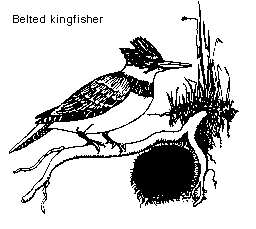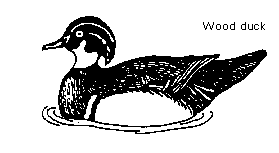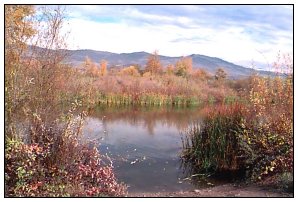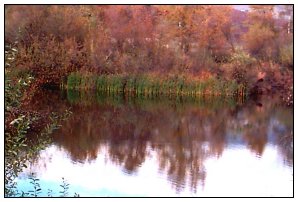 Talent Station 4: Wetland Habitat
Talent Station 4: Wetland Habitat
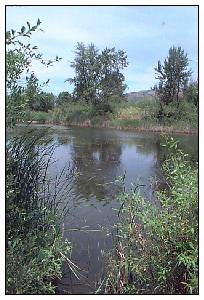
THIS LARGE POND was created in the process of extracting gravel for local construction projects and currently provides wetland habitat for a great variety of wildlife.
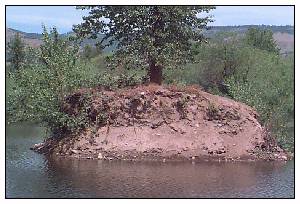
The banks of the island emerging from the pond's center reveal the soil layers found along Bear Creek. The bottom layer consists of cobbles and rocks from the creek's former channel. The soil layer just above it is alluvium, sand, and gravel deposited by the many floods of Bear Creek.
That hole in the bank on the island is the nest of a pair of belted kingfishers, jay-sized birds with big heads and bushy crests. The mated kingfishers take turns digging the 3- to 15-foot burrow. Kingfishers mainly dive for fish, but will also eat reptiles or crustaceans. They defend their stretch of the stream, each advertising its presence with a call resembling the clicks of a fisherman's reel. Mallards are the most common duck found along Bear Creek and its ponds. Their presnece on the pond provides an opportunity to observe the courtship behavior that starts in the fall and culminates with breeding in the spring. Two courtship behaviors to watch for include nod-swimming, when a mallard swims rapidly for a short distance with its head stretched out just above the water; and pumping, when a male and female face each other and rhythmically bob their heads up and down.
Large numbers of migrating Canda geese winter in the bigger ponds and pastures along Bear Creek.
The beautiful plumage of wood ducks makes them distinctive and easy to identify. Wood ducks do not quack, but produce a variety of high-pitched whistles. Wood ducks make their nests in tree cavities high above the water. The ducklings must make the long jump to the ground in order to find water. Their light weight and heavy layer of feathers cushion the fall. Look for the nest boxes placed along the Greenway to replace nest trees that have been lost.
